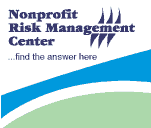|
March 5, 2008
The Essence of Youth Protection: Rules, Reporting and Consequences
By John C. Patterson
Organizations are obsessed with ferreting out sexual predators and preventing them access to young people. Unfortunately, in their zeal to do this,
organizations
focus too much on the sexual predator, and not enough on the safety of the children they want to protect.
Nearly every organization that offers services to children and youth has adopted some form of child abuse prevention. In 1993, when the federal National Child Protection Act was adopted, few organizations conducted criminal history record checks. Fifteen years later criminal history record checks have become a best practice. Organizations risk being pilloried in the public eye if a staff member is accused of committing child sexual abuse and the organization has failed to conduct a criminal records check — whether a check would have revealed any relevant information or not.
The foundation of youth protection should be enforcing the rules that are designed to safeguard the children that are served. Just as a highway patrol officer enforces speed limits to reduce traffic fatalities, organizations need to enforce their youth protection rules to prevent child abuse. Unfortunately, their attention seems to be more focused on catching child molesters than on identifying those who break the rules — there is an important difference.
People are unlikely to catch child molesters in the act of molesting a child. The vast majority of child abuse cases are either disclosed by the child after the fact or suspected by an observer due to physical or behavioral signs displayed by the child after abuse has occurred. In most cases of sexual abuse involving staff and participants of an organization, there were earlier signs that rules were being broken. If confronted, it is typical for the rule breaker to explain away the infraction and promise to do better in the future. However, the adults charged with protecting youth should not minimize the significance of rule breaking because it is the equivalent of looking the other way. Shame on them if they know about rules being broken, but continue to give the rule-breaker access to children.
It is a characteristic of organizations that have not focused on either the rules or what should be done about rule-breaking that there are no policies requiring staff to report rule-breaking. In contrast, there are almost always policies that state if you witness abuse you must report it, as mandated by state laws. But what good are such policies or laws that require mandatory reporting if all that is observed is rule-breaking, as opposed to child abuse? In contrast, what if rule-breaking must be reported and the rule-breakers face consequences that are meaningful? In this latter scenario there is a much stronger likelihood that child abuse can be prevented.
Youth protection should not be abuse response. Organizations need to be proactive in their approach to youth protection. We cannot afford to wait until the child is victimized to take action. The goal is to prevent abuse from happening. To achieve this goal, we need a total commitment to enforcing policies that limit the opportunity for abuse within our organizations.
The approach is simple:
- First be sure that everyone knows the rules.
- Second, establish enforcement mechanisms so that everyone, including the children in the program and their parents, knows that a report must be made if rules are broken.
- Third, follow through by enforcing the rules and holding everyone accountable. Consequences may range from requiring corrective action to termination, depending on the seriousness of the infraction and the individual’s past record of compliance.
Need help identifying what “rules” are needed to protect youth at your organization? The Nonprofit Risk Management Center offers consulting services for youth-serving organizations including risk assessments, as well as policy review and development, all at affordable rates. For more information, please contact John Patterson at 202-785-3891 or via email.
New Research Suggests Internet Predator Profile Is Not Accurate
A new research study led by David Finkelhor of the Universty of New Hampshire debunks the common assumption that Internet predators are adults posing on-line as youth, who lure children into meeting them in person. Researchers, who have studied such Internet-initiated crimes such as abduction or child molestation/rape, report that most online sex offenders are adults who target teens, seducing their victims into sexual relationships by taking time to cultivate a relationship of trust with the youths, who tend to see these relationships as romantic or sexual adventures. The study, “Online Predators and Their Victims: Myths, Realities ad Implications for Prevention” was published in the February/March issue of American Psychologist, a journal published by the American Psychological Association.
The researchers also found that in spite of public concern, adolescents’ use of popular social networking sites, such as MySpace and FaceBook, do not appear to increase the risk of being victimized by online predators. Instead, concern should be focused on instant messages, e-mail and chat rooms, which are used by adult predators for online interactions with youth and provide opportunities to “talk” about sex. Consequently, on-line interactions with unknown people present a far greater risk, according to the study.
For more about online youth safety, visit the Web site of the National Crime Prevention Council and Netsmartz411, a service provided by the Center for Missing and Exploited Children to answer questions about Internet safety, computers, and the Web.
|


